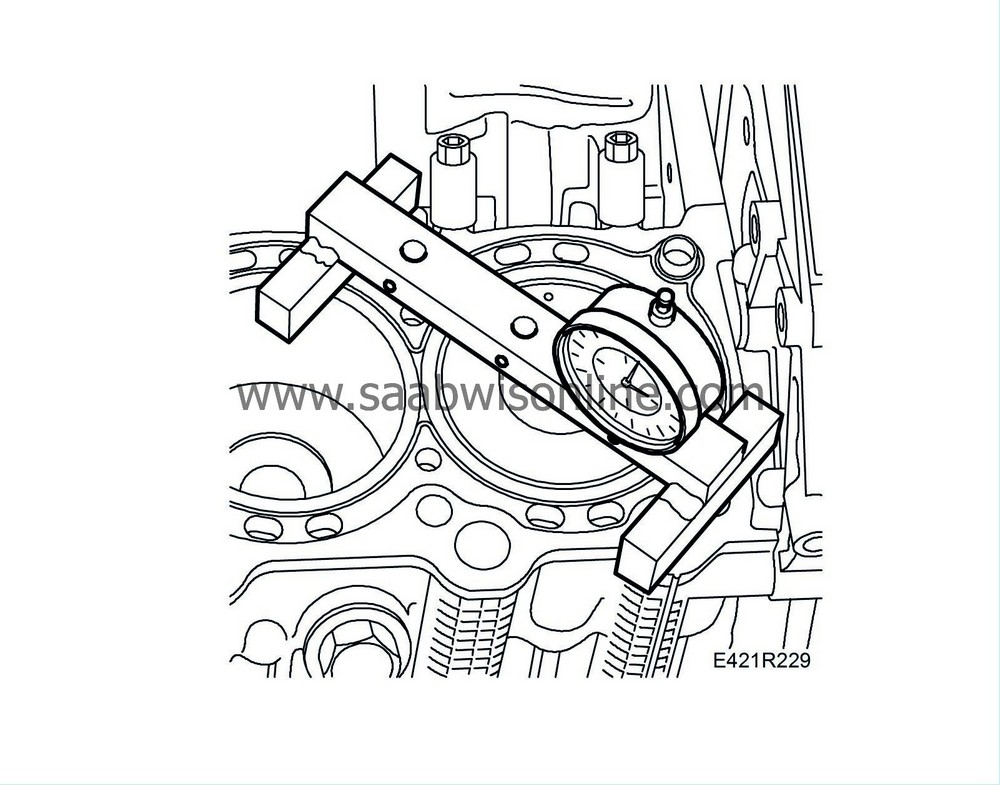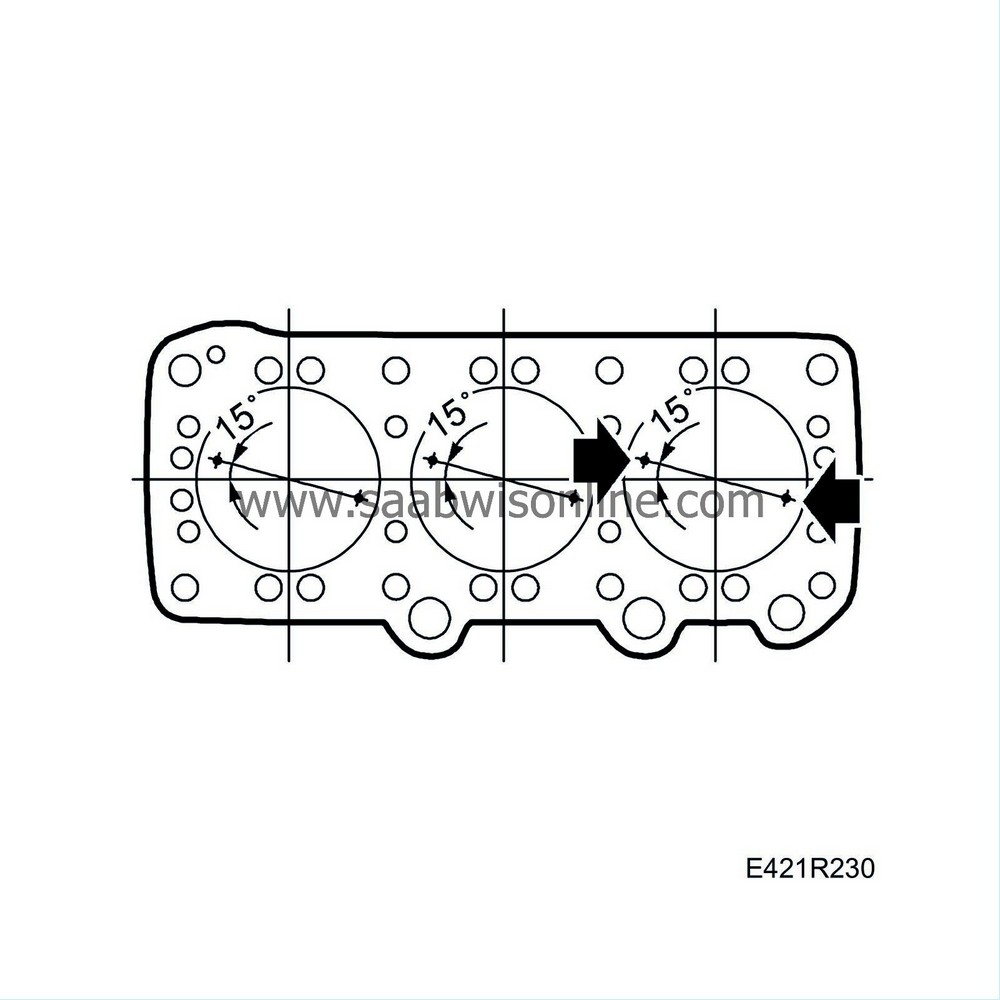Piston height, measuring
| Piston height, measuring |
| Selecting cylinder head gasket |
| • |
The thickness of the cylinder head gasket is determined by how much the piston pushes up over the gasket surface of the cylinder block.
|
|
| • |
Three gasket thicknesses are available. See the table in
Data, engine block.
|
|
| • |
Before measuring, surfaces should be thoroughly cleaned of soot particles and the like.
|
|
| • |
Piston height should be measured at two different points on each piston.
|
|
| • |
Before each piston measurement, make sure that the piston is in its top-most position as follows:
|
|
| 1. |
Fit a
78 40 622 Dial indicator
in a
Measuring jig
.

|
|
| 2. |
Place the measuring jig against the cylinder block's gasket surface so that the dial indicator probe is in contact with the block.
|
|
| 3. |
Reset the dial indicator.
|
|
| 4. |
Place the measuring jig over one of the pistons' measurement points. See illustration.

|
|
| 5. |
Turn the crankshaft in its direction of rotation while reading the dial indicator. Read and note the highest value on the dial indicator before the point turns.
|
|
| 6. |
Repeat the previous point for the other measurement point on the piston.
|
|
| 7. |
Calculate the average for each piston.
|
|
| 8. |
Note the max value for the three pistons of each cylinder bank.
|
|
| 9. |
Select a gasket thickness from the table, see
Engine
, based on the max value obtained.

|
|


